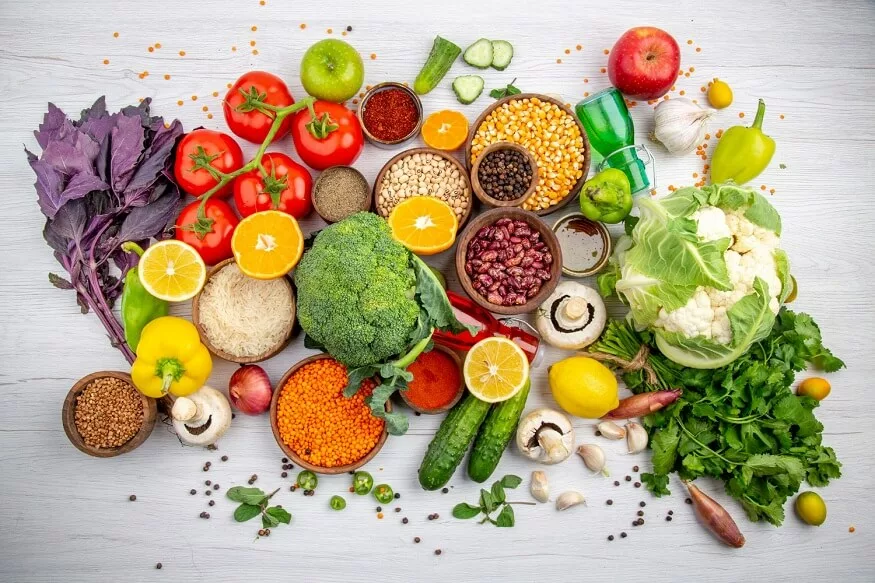It is essential to teach kids about good nutrition. A well-rounded diet coupled with regular physical activity can boost overall health.
Importance of nutrition education
Understanding nutrition goes beyond simply recognizing the different food groups. Knowing how our bodies handle food and recognizing foods that support good health is crucial.
Educating children about nutrition helps them make healthy food decisions as they get older.
Also Read: Boosting Kids Immunity with Strawberries
Key areas in nutrition
Macronutrients and micronutrients
Knowing about nutrition is important for good health. Our bodies need three macronutrients:
- Complex carbohydrates such as whole grains and vegetables must be the majority of our diet.
- Protein repairs muscles and tissues
- Good fats like avocados, nuts, olive oil, and fish help with brain growth.
Micronutrients are:
- Vitamins: Vitamins, A, B, C, D, E
- Minerals: Iron, calcium, magnesium, and zinc
Food Sources
It is crucial to discuss with children which foods are high in what nutrients.
- Calcium: Foods like cheese and yoghurt are rich in calcium, with cheese holding approximately 72% of the required daily intake (RDI) per 100 grams.
- Protein: Foods like eggs and chicken are high in protein, with chicken containing about 26 grams per 100 grams.
- Iron: Spinach and beans are packed with iron, with spinach containing around 3.6 mg of iron per 100 grams.
- Vitamins: Strawberries and oranges, packed with Vitamin C, boost our immune system. A medium orange offers nearly 70% of the recommended daily intake for this vitamin. Fruits and veggies are full of vitamins and fibre, while whole grains give us complex carbs, and dairy provides protein and calcium.
Reading Food Labels
Food labels offer information about what is inside a food product. Teaching older children to read food labels helps them analyse nutritional value and make informed choices. Some guidelines are provided below:
- Ingredient listing: The ingredients are listed in descending order by weight. This means that the first item on the list is the most dominant in that food product.
- Serving Size: Children should understand that the nutritional value mentioned on the labels relates to a certain serving size. Explain how a small package can contain more than one serving and consuming the whole package multiplies the nutritional contents accordingly. Giving them practical examples like visualising serving sizes about familiar objects may help them grasp this concept better.
- Calories and Nutrients: Explain to them that calories provide energy, but an excessive intake can lead to weight gain. Similarly, discuss the importance and function of different nutrients: proteins for muscle development and repair, carbohydrates for energy, fats for cell function, fibre for digestion, and sugars to be consumed sparingly.
Incorporate label-reading activities during grocery shopping or meal planning; the real-world application will reinforce the learning process.
Also Read: Healthy Snacking with Dried Fruits for Kids
Identify empty-calorie foods
Junk foods are unhealthy due to high salt, sugar, and bad fats. They lack essential nutrients and increase the risk of diseases like hypertension and stroke.
Also Read: The Role of Pears in Promoting Digestive Health for Children
Strategies to teach children about nutrition
Teach the concept of nutrition
Children should learn the concept of ‘nutritious foods.’ Instead of blindly labelling foods as good or bad, explaining why certain foods are called “nutritious” can create a positive impression of healthy eating. Teaching them about the food groups can be valuable for understanding balanced nutrition. Use visual aids such as food pyramids or plate models to reinforce concepts.
Children grasp information effectively through play and visual representations. Utilise food-related games, puzzles, or even cooking exercises to make learning more engaging.
Encourage their involvement in meal planning and grocery shopping, as this can help them apply what they have learned.
Make healthy eating fun
When learning about food is fun, kids get excited about eating healthy. This process can be accomplished by involving them in meal preparation, growing a small home garden, or even playing online food games.
Modelling Healthy Eating Habits
Children often learn best just by imitating adults. Adopting healthy eating habits, yourself and showing enthusiasm for nutritious foods, can largely influence your children’s own food choices.
Experiment with Different Foods
Offering a variety of fruits, vegetables, and whole grains at meal times can nurture an adventurous palate in children. Explaining how some foods have vitamins and minerals that make them strong can make children want to eat those foods.
School Education
Nutrition education can be integrated into the school curriculum in multiple ways. Schools can adopt classroom lessons on the importance of proper nutrition, a balanced diet, food groups, safe food preparation, and hygiene.
Also Read: Teaching Kids About the Nutritional Value of Mangoes
Schools can also provide practical learning through school gardens, enabling students to learn about plant-based nutrition firsthand. School cafeterias can model healthy eating by offering nutrient-rich, balanced meals and snacks.
For more such interesting blogs, Visit EuroSchool.









